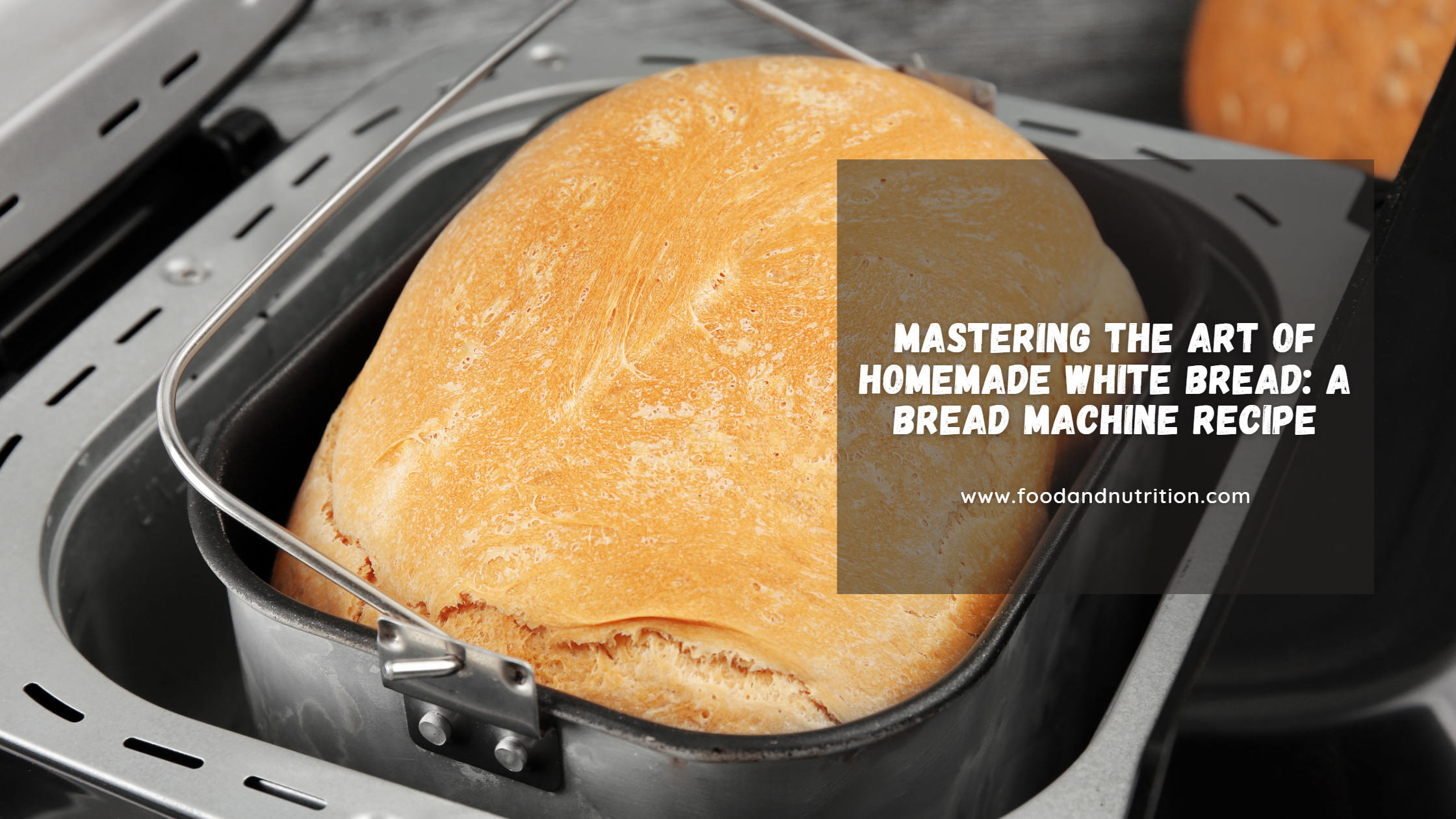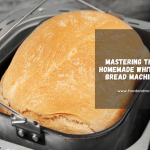Mastering the Art of Homemade White Bread: A Bread Machine Recipe

There’s something undeniably comforting about the aroma of freshly baked bread that fills your kitchen. It warms the heart and tantalizes the taste buds. For centuries, bread has been a staple food in many cultures, and one variety that has stood the test of time is white bread. In this blog post, we’ll delve into the history, popularity, ingredients, nutrition, and serving ideas of a wonderful white bread recipe made using a bread machine. Join us on this journey as we explore the art of homemade white bread.
The History of White Bread
White bread has a rich history dating back thousands of years. In ancient civilizations, bread was often considered a symbol of wealth and prosperity. The refinement process to create white flour, by removing the bran and germ, was a luxury reserved for the elite. It wasn’t until the Industrial Revolution and advancements in milling technology that white bread became more accessible to the masses. Since then, it has become a beloved choice for its soft texture and versatility.
The Popularity of Homemade White Bread
Despite the wide availability of store-bought bread, homemade white bread continues to hold a special place in the hearts of many home bakers. The use of a bread machine has made it easier than ever to enjoy the pleasure of baking bread at home. The appeal lies not only in the satisfaction of creating something from scratch but also in the ability to customize the recipe to suit personal preferences. The control over ingredients, freshness, and the joy of sharing a warm slice with loved ones adds to its enduring popularity.
Common Ingredients in White Bread
The simplicity of white bread is one of its charms. The ingredients for this recipe are basic pantry staples that you likely already have on hand. The recipe calls for milk, water, salt, canola oil, honey, all-purpose flour, and dry yeast. Each ingredient plays a crucial role in creating a loaf of bread that is moist, flavorful, and has a tender crumb. The milk adds richness, while the honey adds a touch of sweetness. The canola oil ensures a soft texture, and the yeast provides the essential leavening for the bread to rise.
Easy Bread Machine White Bread Recipe
Ingredients
- 1 cup milk
- – 2 tablespoons water
- 1 teaspoon salt
- 1 tablespoon canola oil
- 1 tablespoon honey
- 3 ¼ cups all-purpose flour
- 1 teaspoon dry yeast
Instructions
- In the bread pan of your bread machine, measure the milk, salt, canola oil, and honey.
- Add the all-purpose flour and dry yeast to the pan.
- Select the basic bread cycle for a 1 to 1-1/2 pound loaf.
- Start the bread machine and let it do its magic.
- The baking time will be approximately 40 minutes.
- Once baked, remove the loaf from the bread machine and let it cool before slicing.
- Enjoy your homemade white bread!
Nutrition in Homemade White Bread
While white bread has often been criticized for its lack of nutritional value compared to whole grain bread, homemade white bread can still be a part of a balanced diet. The inclusion of milk in this recipe adds calcium and protein to the bread. Furthermore, the moderate use of canola oil provides heart-healthy monounsaturated fats. However, it’s important to note that white bread should be enjoyed in moderation, as it is higher in refined carbohydrates compared to whole grain bread. Pairing it with protein-rich fillings or spreads can help balance the meal.
Serving Ideas for Homemade White Bread
White bread’s versatility is another reason for its enduring popularity. It serves as the foundation for numerous culinary creations. From classic sandwiches like BLTs and grilled cheese to homemade breadcrumbs for crispy chicken cutlets, the possibilities are endless. Consider toasting thick slices of white bread and spreading them with creamy avocado or topping them with freshly made bruschetta. For a sweet treat, transform your white bread into delightful French toast or bread pudding. The soft and pillowy texture of homemade white bread enhances every dish it accompanies.
In conclusion, homemade white bread, prepared using a bread machine, allows us to experience the joy and satisfaction of baking our own loaf while savoring the delightful aroma that fills our homes. Its history, popularity, simple ingredients, and endless serving ideas make it a cherished recipe for both novice and experienced bakers. So why not embrace the art of homemade white bread and create your own delicious loaf today? Enjoy the process, share the love, and indulge in the pure pleasure of homemade bread.
- Embracing Summer: The Ultimate Watermelon Feta Salad with Tomatoes & Olives
- Rediscovering Lebanese Salad: A Refreshing Delight with a Rich Heritage
- Eating Your Way to Healthy Blood Pressure: A Guide to Lowering Hypertension
- Perfect Roasted Leg of Lamb: A Timeless Delight for Your Table
- Romesco Sauce: A Flavorful Spanish Delight That Elevates Every Dish
- Master Cooking with Salt: A Guide to Types & Uses – Elevate Meals
